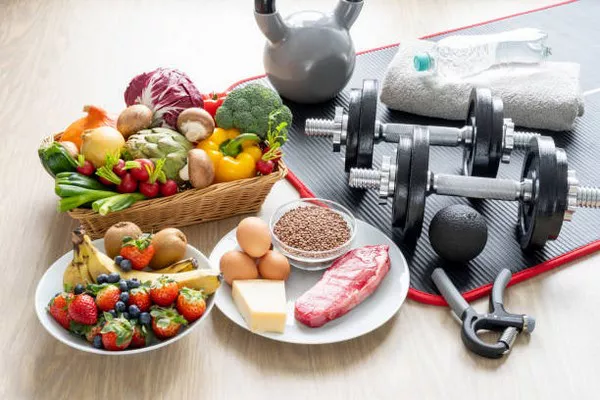When you aim to eat low-calorie foods, the goal is to consume items that provide nutrition without a high caloric impact. These foods are typically rich in vitamins, minerals, fiber, and water content, while being low in fat and sugar. Here’s an in-depth look into various low-calorie foods that you can incorporate into your diet.
Benefits of Eating Low-Calorie Foods
Eating low-calorie foods can help with:
Weight management
Improved energy levels
Better digestion
Reduced risk of chronic diseases
Enhanced mental clarity
Fruits
Fruits are a great choice for low-calorie snacks and meals. They are naturally sweet, full of vitamins, and low in calories.
Berries
Strawberries: About 50 calories per cup. High in vitamin C and antioxidants.
Blueberries: Around 85 calories per cup. Great source of fiber and vitamin C.
Raspberries: Approximately 64 calories per cup. Packed with fiber and vitamin C.
Citrus Fruits
Oranges: About 62 calories per medium orange. Rich in vitamin C.
Grapefruits: Around 52 calories per half. Good for boosting metabolism.
Apples and Pears
Apples: About 95 calories per medium apple. High in fiber and vitamin C.
Pears: Around 100 calories per medium pear. Full of fiber and antioxidants.
Vegetables
Vegetables are nutrient-dense and low in calories, making them perfect for any diet.
Leafy Greens
Spinach: Only 7 calories per cup. Rich in iron, calcium, and vitamins A and C.
Kale: About 33 calories per cup. Packed with vitamins A, K, and C.
Cruciferous Vegetables
Broccoli: Around 55 calories per cup. High in fiber, vitamins C and K.
Cauliflower: Approximately 25 calories per cup. Low in calories, high in fiber.
Other Vegetables
Cucumbers: About 16 calories per cup. Mostly water, great for hydration.
Bell Peppers: Around 30 calories per cup. Rich in vitamins A and C.
Carrots: Approximately 52 calories per cup. High in beta-carotene and fiber.
Protein Sources
Including low-calorie protein sources helps build and repair tissues without adding too many calories.
Lean Meats
Chicken Breast: Around 165 calories per 3-ounce serving. High in protein, low in fat.
Turkey Breast: About 125 calories per 3-ounce serving. Lean and high in protein.
Fish
Cod: Approximately 89 calories per 3-ounce serving. Low in fat, high in protein.
Salmon: Around 206 calories per 3-ounce serving. High in omega-3 fatty acids.
Plant-Based Proteins
Tofu: About 70 calories per 3-ounce serving. Good source of protein and calcium.
Legumes: Varies, around 230 calories per cup for lentils. High in fiber and protein.
Dairy and Alternatives
Low-calorie dairy options can provide essential nutrients like calcium and protein.
Dairy
Greek Yogurt: About 100 calories per 6-ounce serving. High in protein and probiotics.
Cottage Cheese: Around 206 calories per cup. High in protein and calcium.
Dairy Alternatives
Almond Milk: Approximately 30-50 calories per cup. Low in calories, fortified with vitamins.
Soy Milk: Around 80-100 calories per cup. Good source of protein.
Grains
Opt for whole grains that provide fiber and essential nutrients without too many calories.
Whole Grains
Quinoa: About 222 calories per cup cooked. Complete protein and high in fiber.
Brown Rice: Around 218 calories per cup cooked. Rich in fiber and minerals.
Other Low-Calorie Options
Popcorn: Approximately 31 calories per cup air-popped. Low in calories, high in fiber.
Oats: Around 154 calories per cup cooked. High in fiber and nutrients.
See Also: What Breakfast To Eat To Lose Belly Fat
Snacks
Choosing the right snacks can help maintain energy levels without adding excessive calories.
Low-Calorie Snacks
Celery Sticks with Hummus: About 100 calories for a reasonable serving. High in fiber and protein.
Apple Slices with Peanut Butter: Approximately 150 calories for a small apple with a tablespoon of peanut butter. Balanced snack with fiber and healthy fats.
Beverages
Opt for low-calorie beverages to stay hydrated without consuming too many calories.
Water and Infused Water
Water: Zero calories. Essential for hydration and overall health.
Infused Water: Around 5-10 calories per serving. Add fruits, vegetables, or herbs for flavor.
Tea and Coffee
Green Tea: About 2 calories per cup. Rich in antioxidants.
Black Coffee: Approximately 2 calories per cup. Can boost metabolism and energy.
Tips for Maintaining a Low-Calorie Diet
Plan Your Meals: Plan and prepare your meals in advance to avoid high-calorie temptations.
Watch Portion Sizes: Control portion sizes to keep calorie intake in check.
Read Labels: Check nutritional labels to choose low-calorie options.
Stay Hydrated: Drink plenty of water to help control hunger and stay hydrated.
Limit High-Calorie Condiments: Use low-calorie condiments and dressings.
Conclusion
Eating low-calorie foods doesn’t mean sacrificing flavor or nutrition. By incorporating a variety of fruits, vegetables, lean proteins, whole grains, and healthy snacks into your diet, you can enjoy delicious meals while maintaining a healthy weight. Remember to stay hydrated and watch portion sizes to make the most of your low-calorie eating plan.
By focusing on nutrient-dense, low-calorie foods, you can achieve your health and fitness goals while enjoying a wide range of tasty and satisfying meals.


